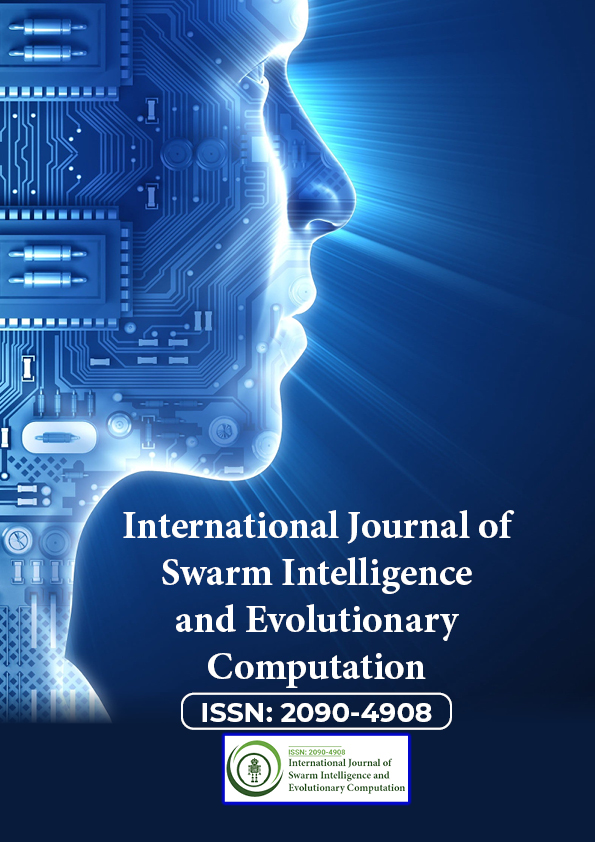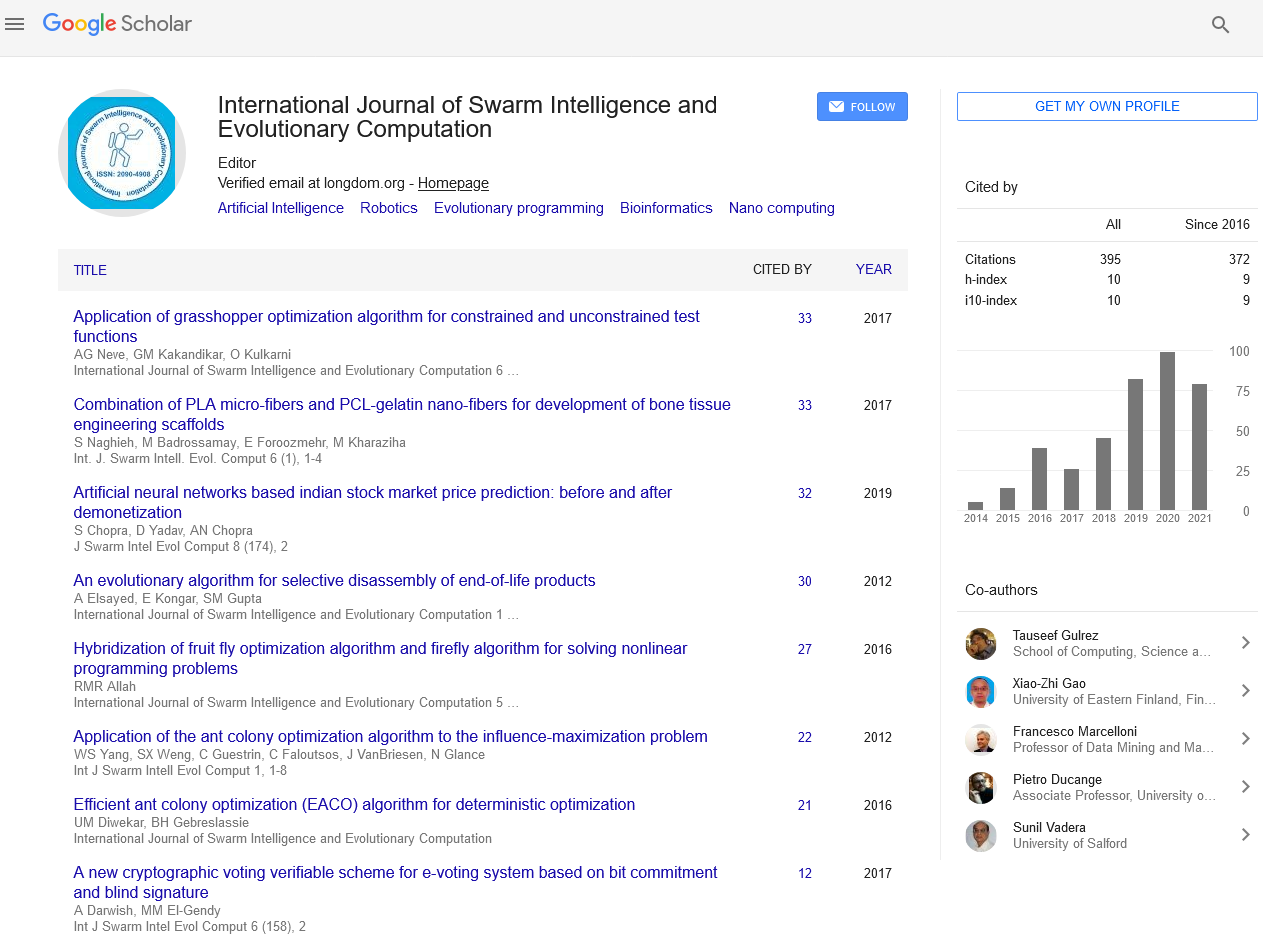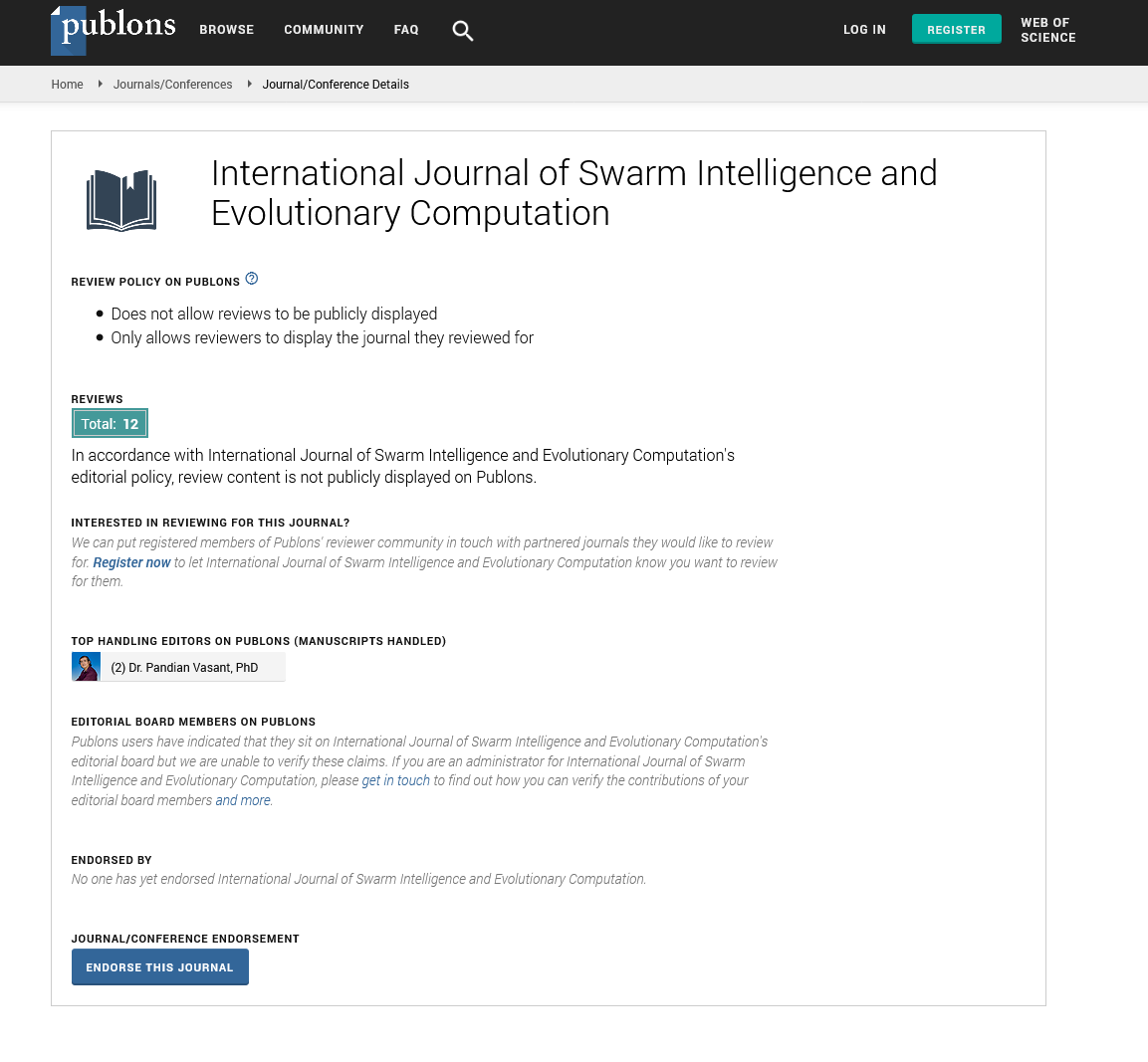Indexed In
- Genamics JournalSeek
- RefSeek
- Hamdard University
- EBSCO A-Z
- OCLC- WorldCat
- Publons
- Euro Pub
- Google Scholar
Useful Links
Share This Page
Journal Flyer

Open Access Journals
- Agri and Aquaculture
- Biochemistry
- Bioinformatics & Systems Biology
- Business & Management
- Chemistry
- Clinical Sciences
- Engineering
- Food & Nutrition
- General Science
- Genetics & Molecular Biology
- Immunology & Microbiology
- Medical Sciences
- Neuroscience & Psychology
- Nursing & Health Care
- Pharmaceutical Sciences
Perspective - (2024) Volume 13, Issue 4
Advancing Optimization Techniques: Insights into Brainstorm Optimization Algorithms
Binali Khan*Received: 28-Jun-2024, Manuscript No. SIEC-24-26599; Editor assigned: 01-Jul-2024, Pre QC No. SIEC-24-26599 (PQ); Reviewed: 16-Jul-2024, QC No. SIEC-24-26599; Revised: 24-Jul-2024, Manuscript No. SIEC-24-26599 (R); Published: 31-Jul-2024, DOI: 10.35248/2090-4908.24.13.385
Description
Optimization algorithms plays an important role in solving complex problems across various domains. Brainstorm Optimization Algorithms (BOAs) are a novel class of algorithms inspired by cognitive processes and brainstorming techniques. Optimization is central to numerous fields, including engineering, computer science, economics, and logistics. Traditional optimization algorithms, such as gradient descent and evolutionary algorithms, have demonstrated effectiveness in finding optimal solutions. However, these methods often face limitations when dealing with complex, multi-modal, and highdimensional problems. Brainstorm Optimization Algorithms (BOAs) emerge as a promising approach, drawing inspiration from human cognitive processes and collaborative brainstorming techniques.
Principles of brainstorm optimization algorithms
BOAs are inspired by the human brain's ability to generate, evaluate, and refine ideas through collaborative thinking. The core principles of BOAs include:
Diverse idea generation: Just as brainstorming sessions benefit from a wide range of ideas, BOAs leverage diverse candidate solutions to explore the solution space effectively. This diversity helps avoid local optima and enhances the algorithm's ability to find global solutions.
Collaboration and refinement: BOAs mimic the collaborative aspect of brainstorming, where individual solutions interact and refine each other. This collaboration allows for the pooling of knowledge and insights, leading to improved solutions over time.
Adaptation and learning: BOAs incorporate adaptive mechanisms to learn from past experiences and dynamically adjust their strategies. This adaptability helps the algorithm navigate complex landscapes and respond to changing problem conditions.
Mechanisms of brainstorm optimization algorithms
BOAs typically consist of several key mechanisms:
Idea generation: At the start of the optimization process, BOAs generate a diverse set of candidate solutions. This generation process may involve random initialization, heuristics, or domainspecific techniques to ensure a broad exploration of the solution space.
Idea evaluation: Each candidate solution is evaluated based on its fitness or quality relative to the optimization objective. Fitness functions are designed to measure how well a solution performs in achieving the desired outcome.
Idea collaboration: Solutions interact with each other through mechanisms such as mutation, crossover, or information exchange. This collaborative process allows for the combination of beneficial traits and the refinement of solutions.
Adaptation and learning: BOAs adapt their strategies based on the performance of solutions. This adaptation may involve adjusting parameters, exploring new regions of the solution space, or incorporating feedback from previous iterations.
Applications of brainstorm optimization algorithms
BOAs have demonstrated their utility in various domains:
Engineering design: In engineering, BOAs can optimize complex designs by generating and evaluating multiple design configurations. This approach helps in identifying optimal parameters for performance, cost, and reliability.
Machine learning: BOAs are applied in hyper parameter tuning for machine learning models. By exploring a diverse set of hyper parameters and refining them through collaborative processes, BOAs enhance model performance and generalization.
Logistics and supply chain: BOAs address optimization challenges in logistics and supply chain management, such as route planning and inventory management. The algorithms generate diverse solutions and collaborate to find efficient strategies for minimizing costs and improving operational efficiency.
Financial planning: In finance, BOAs assist in portfolio optimization by generating and evaluating investment strategies. The collaborative nature of BOAs helps in identifying optimal asset allocations and managing risks.
Challenges and future directions
While BOAs offer promising advantages, they also face certain challenges:
Scalability: BOAs may struggle with scalability in highdimensional problem spaces. Developing efficient techniques to handle large-scale problems remains a key area of research.
Convergence: Ensuring convergence to optimal solutions can be challenging, especially in complex landscapes with multiple local optima. Strategies to enhance convergence and solution quality are actively being explored.
Parameter tuning: BOAs often require careful tuning of parameters, such as mutation rates or collaboration mechanisms. Research into adaptive parameter tuning methods can improve the efficiency and effectiveness of BOAs.
Conclusion
Brainstorm optimization algorithms represent a novel and promising approach to solving complex optimization problems. By obtaining inspiration from cognitive processes and collaborative thinking, BOAs offer a unique perspective on generating, evaluating, and refining solutions. Despite challenges related to scalability and convergence, BOAs hold significant potential across various domains, from engineering design to financial planning. Ongoing research and development will continue to enhance the capabilities and applications of BOAs, contributing to advancements in optimization methodologies and problem-solving strategies.
Citation: Khan B (2024) Advancing Optimization Techniques: Insights into Brainstorm Optimization Algorithms. Int J Swarm Evol Comput.13:385.
Copyright: © 2024 Khan B. This is an open-access article distributed under the terms of the Creative Commons Attribution License, which permits unrestricted use, distribution, and reproduction in any medium, provided the original author and source are credited.


